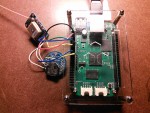(This is an update of an article I wrote in 2011. Because so much has changed, I’ve opted for a re-write instead of just updating the original. The re-write went up in 2017; I have updated it for 2023.)
MediaWiki is the software behind Wikipedia, but you can use it to create your own special-purpose sites. I’ve used it at work to build an internal company knowledge base, and at home to make a Wiki for the fictional worlds of a couple of roleplaying games I’ve been in.
It’s a pretty polished software package, but out of the box it tends to assume that you are creating something like Wikipedia that is visible to (and editable by) the whole wide world. If that’s not what you want, it requires some tuning, which I’ll describe in detail after the jump.


